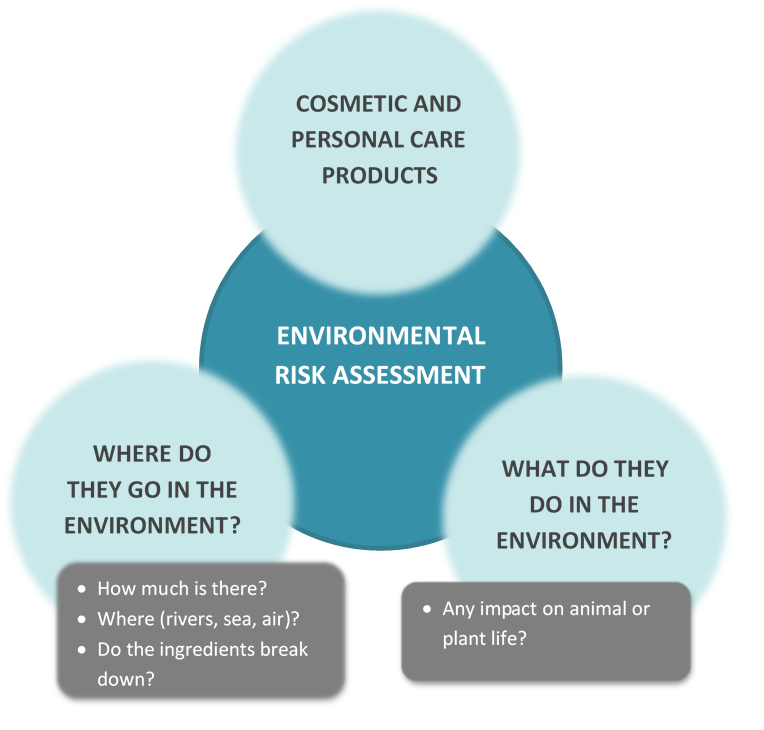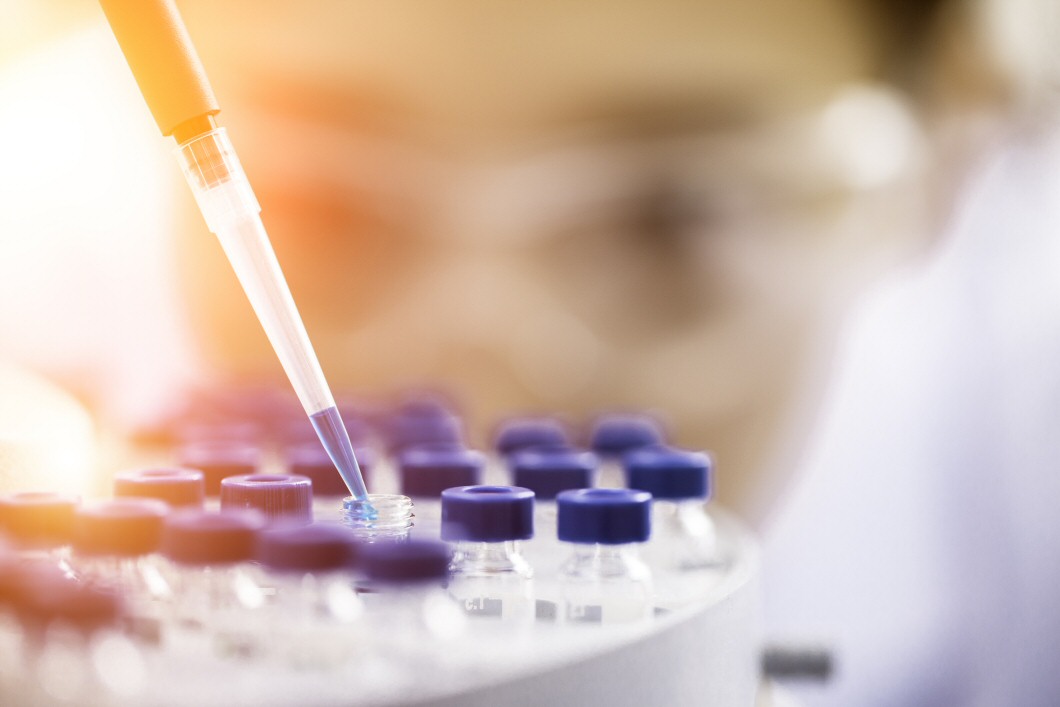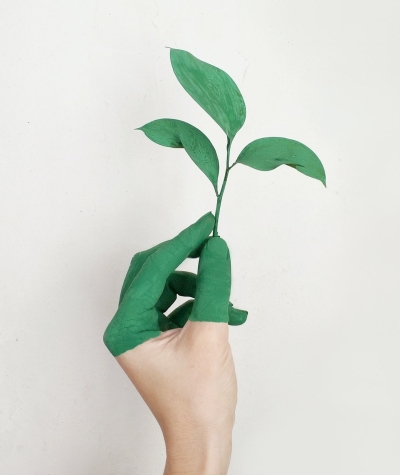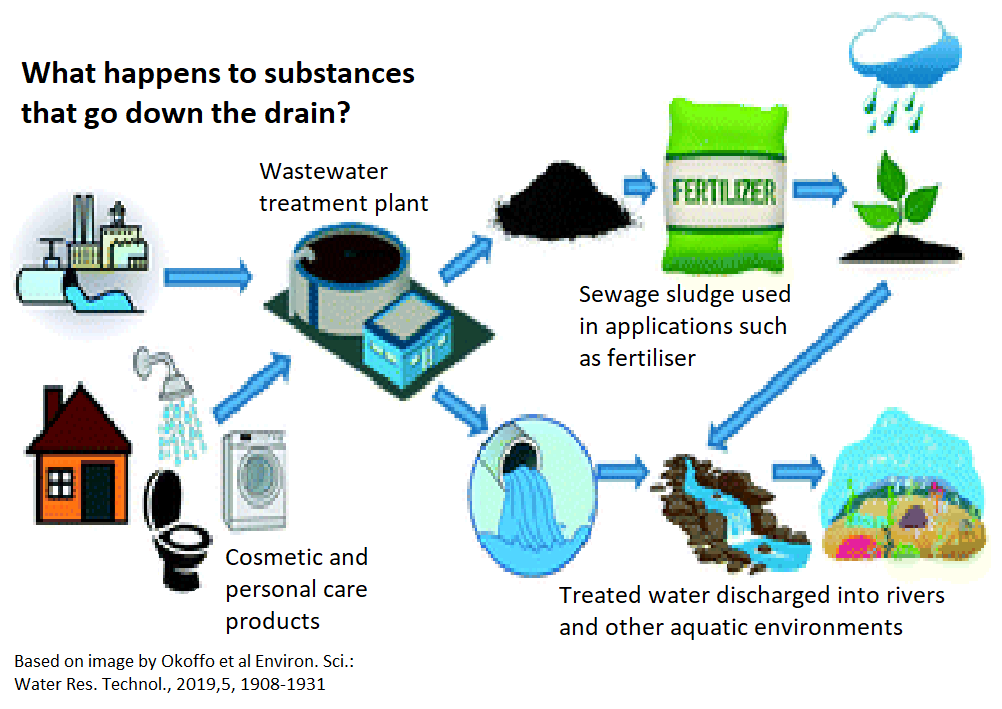Safety is the number one priority of the cosmetics industry. This doesn't just mean ensuring that products are safe for us to use, it also means ensuring that our products are safe for the environment after they are used and washed off down the drain, or evaporate into the air.
Therefore, companies conduct environmental risk assessments on their ingredients and products to make sure that they are safe for the environment.
The purpose of environmental risk assessment is to make sure that the amount of a chemical in the environment is too low to cause any negative effects for the environment and the life it supports.
What information do we need to assess environmental safety?
Three key pieces of information are:
- How much of the substance could end up in the environment?
- Where does the substance go within the environment?
- What effect could the substance have on the environment once it is there?

It is vital to understand both exposure (how much and where) and hazard (potential impact). Just because a substance is present in the environment doesn't mean it will cause harm. For example, there are lots of grains of sand in the sea, but as these are not hazardous they don't cause a problem.
Equally, a substance which is hazardous and has the potential to cause harm won't necessarily cause harm in reality if it isn't present in a large enough amount, or in a certain location, or under other specific conditions. For example, naturally-occurring radioactive radon gas is a hazardous substance, but taking action to reduce the amount of it in a house will ensure it doesn't pose a threat.
How much is in the environment?
 Specially developed modelling software is often used to help companies understand what happens to cosmetic ingredients after the product has been used. For example, the amount of an ingredient in the environment, where it is located and how it behaves. Internationally standardised tests are used to check how ingredients will biodegrade and break down under relevant real-life conditions.
Specially developed modelling software is often used to help companies understand what happens to cosmetic ingredients after the product has been used. For example, the amount of an ingredient in the environment, where it is located and how it behaves. Internationally standardised tests are used to check how ingredients will biodegrade and break down under relevant real-life conditions.
What impact could it have on the environment?
 Tests can be used to understand what effect a substance might have on the environment. A huge amount of work is being done to develop modern, accurate test methods which don't use animals. Several methods are currently available, with many more in development. For example, tests based on cell cultures which are grown in a lab can be used to predict certain toxic effects, or computer simulation tools.
Tests can be used to understand what effect a substance might have on the environment. A huge amount of work is being done to develop modern, accurate test methods which don't use animals. Several methods are currently available, with many more in development. For example, tests based on cell cultures which are grown in a lab can be used to predict certain toxic effects, or computer simulation tools.
Is it safe?
The two key pieces of information are compared: The real-life concentration of the ingredient in the environment vs the concentration which has been shown to be safe in the environment. The amount of the substance in the environment must be lower than the amount which we know to be safe for the environment.


